If you are rowing a manual transmission as you cruise down the road, you are doing two things. One: You are accomplishing something many people in our current society can’t do: drive a manual transmission vehicle. Second: You are carefully balancing the engine RPM with the engagement of the rear tires and the roadway via the clutch. How that clutch interacts with the flywheel depends on the pressure plate and your left foot on the clutch pedal. The more adept you are at properly slipping the clutch affects the life of the clutch and the performance of a launch at a drag strip or an exit of a corner on a road course. To put it simply, clutches matter. Well, they matter to all of us who aren’t driving an automatic and to the experts at SPEC Clutch.
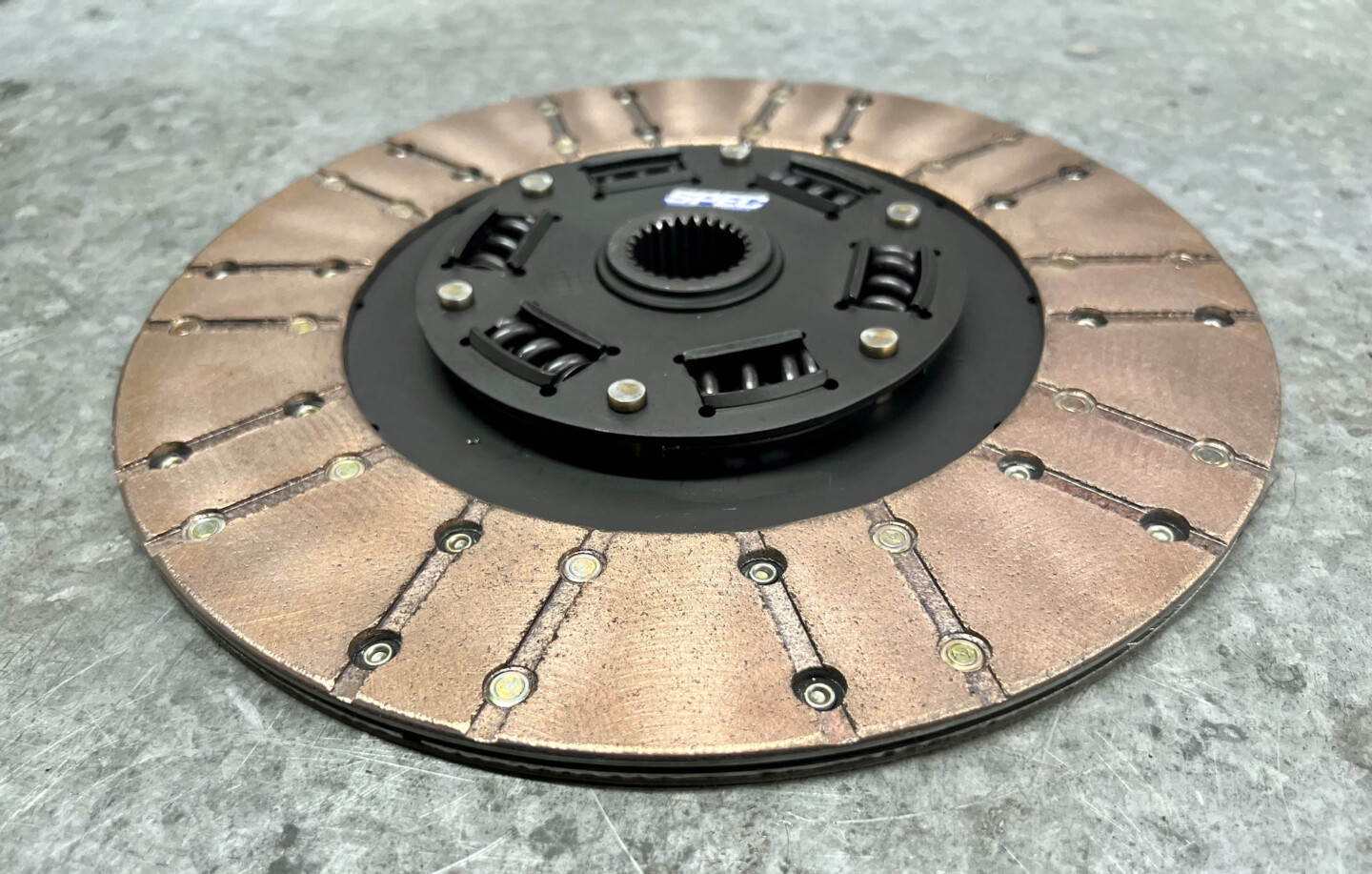
This is it, folks, a clutch. Yup, there isn’t much to it. You can see how limited the material is on it that wears as you slip the clutch. Once this material wears to a certain point, you will have metal-on-metal noises as the rivets score the flywheel (which is a bad thing).
Not Every Clutch Is Equal
Not all clutches are created the same. They come in different sizes, materials, and weights and provide many different outcomes regarding performance. There is no single “this is the best clutch” answer because it depends on what you want to use your vehicle for and how comfortable you want that clutch pedal to feel. You can purchase the “best performance clutch for drag racing” with the stiffest backing plate, but I promise if all you do is drive your car to college and hit the occasional autocross, you will regret your clutch choice each time your left leg is doing a deadlift to engage the clutch pedal. By the end of the semester, your left leg will have more muscle mass than your right leg. You’re going to walk funny. Nobody wants that. When it comes to clutch choice, choose your adventure. Long story short, choose wisely.
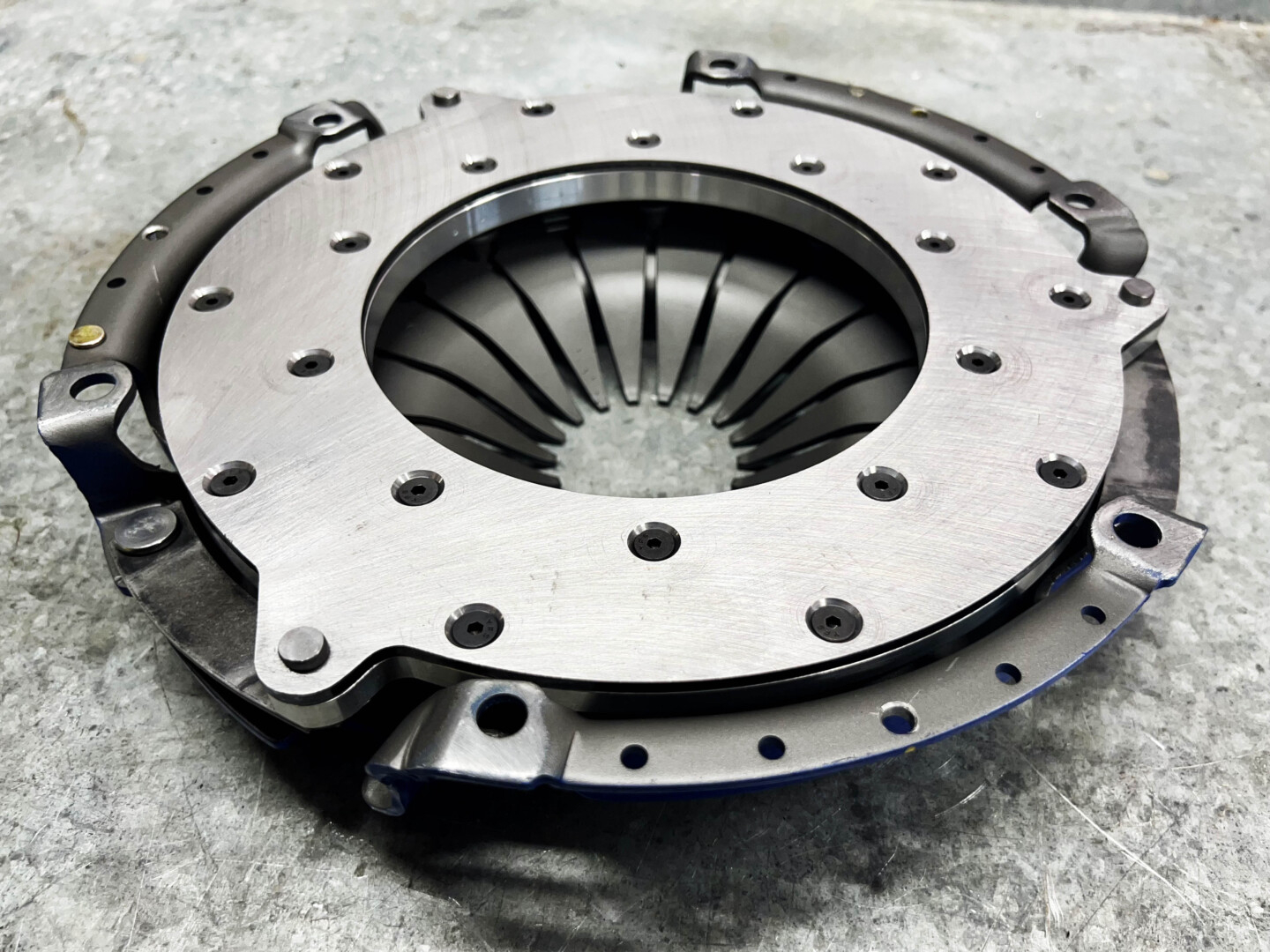
Under Pressure, it’s not just a David Bowie song. Don’t know David Bowie? Then you probably don’t know how to drive a stick, either. Just kidding! Regardless, the pressure plate, pictured above, is what clamps the clutch up against the flywheel when the clutch pedal is released. How strong this pressure plate is will determine how easily the clutch pedal is engaged.
There are many things to consider when choosing the right clutch, like how much torque you will be throwing at it. What will the car be used for? Do you care about rotational mass? How big is your wallet? With this many variables at play, we decided to stop guessing and ask an expert. That led us to David Norton from SPEC Clutch. He was kind enough to walk us through some of the choices available. SPEC has many clutch package options from Stage 1 (high-performance, smooth engagement) to Stage 5 (highest possible friction coefficient but not street-friendly).
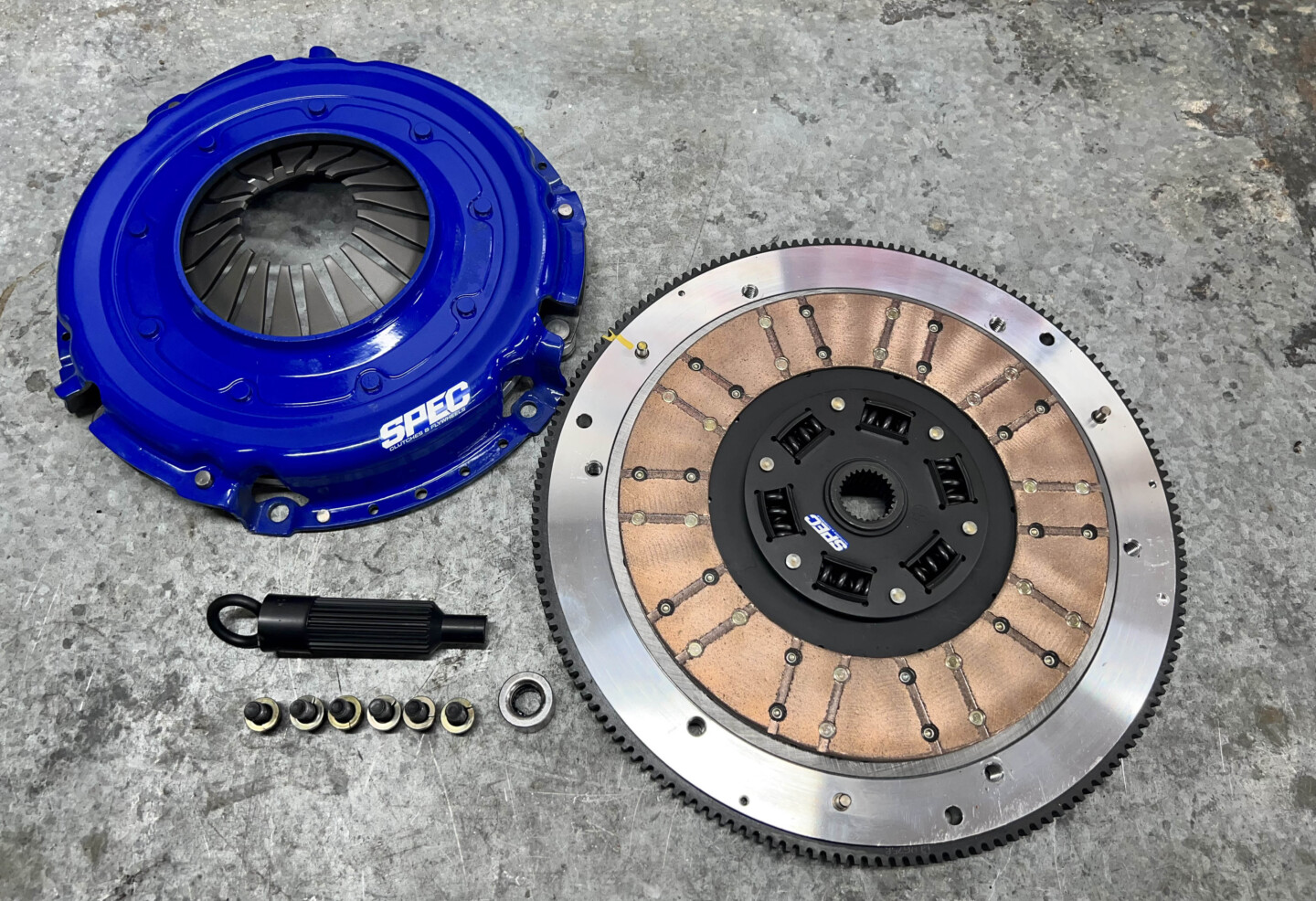
SPEC sells its Stage 2 Plus 10.5-inch clutch kit with lightweight options, providing improved performance with good street manners. This kit is excellent for autocross, track days, or road racing.
SPEC ‘ing The Right Clutch
Norton asked us specific questions regarding how we would use this clutch so he could use his expertise to dial us in with the right system. We explained we needed a new clutch to go with the new Tremec transmission we are going to install in a project that will be used for autocross and street use. The car will have numerous bolt-on modifications to increase horsepower but nothing too intense, like a twin-turbo LS swapped nitrous drag car. Norton walked us through the SPEC website and zeroed in on the Stage 2 Plus 10.5-inch kit with some lightweight options. “You want something light and manageable for your power level and for street driving,” said Norton. “Go as light as possible. A standard diameter unit (around 12 inches) with an aluminum flywheel (12.5 pounds) and an aluminum pressure plate will be 25 to 28 pounds lighter in total compared to standard-weight parts. And if we go to a 10.5-inch-diameter unit, that drops an additional four pounds off the lightweight standard-diameter unit.”
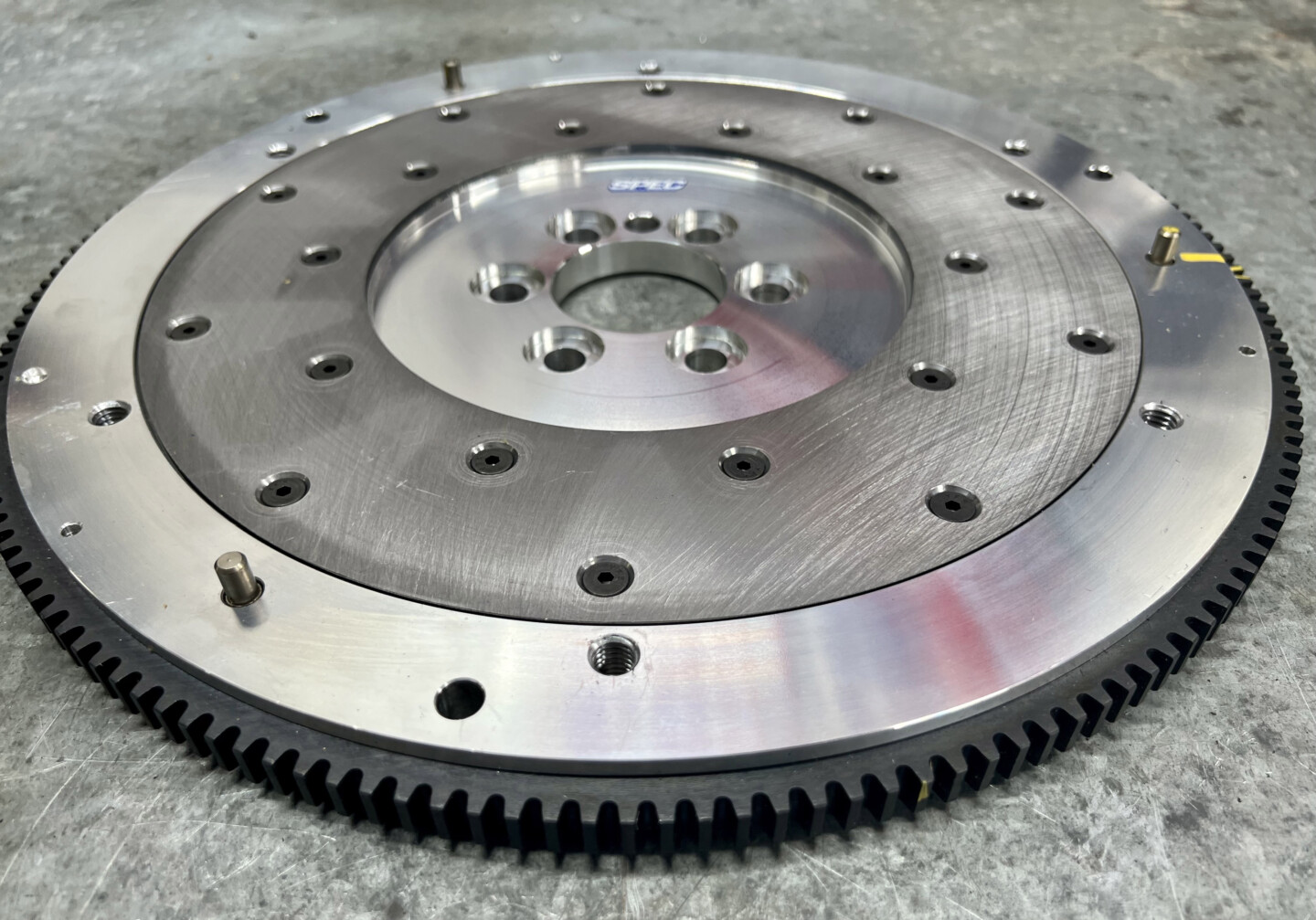
The flywheel is bolted directly to the engine and is what the clutch interfaces with when the pressure plate is let go by the clutch pedal. This is usually made of steel from the manufacturer but can be replaced with a lightweight aluminum unit like this one from SPEC. The less weight on the back of the engine provides more power for the rear wheels.
Norton kept us from a higher-stage clutch because this would be an autocross car. “A higher-stage clutch on a lighter setup is a bit more touchy from a start,” cautioned Norton. “A higher-stage clutch is unnecessary until you get into the 800-900 plus pound-foot torque range.” Since our car is well below that torque range, we decided on the Stage 2 Plus unit. Instead of searching for a really stiff pressure plate, we concentrated on keeping things lightweight. Norton said that was smart for our road course application but would not be the case for drag racing. “For dedicated drag racing, a light flywheel or light clutch would be ok, but not both,” he said. “The reasoning is while launching the car out of the hole. The lighter the complete clutch setup is, the higher the launch rpm has to be if the car is dead hooking.” Since that wasn’t an issue for us, Norton commented that the lighter components would help our left foot with the clutch pedal.
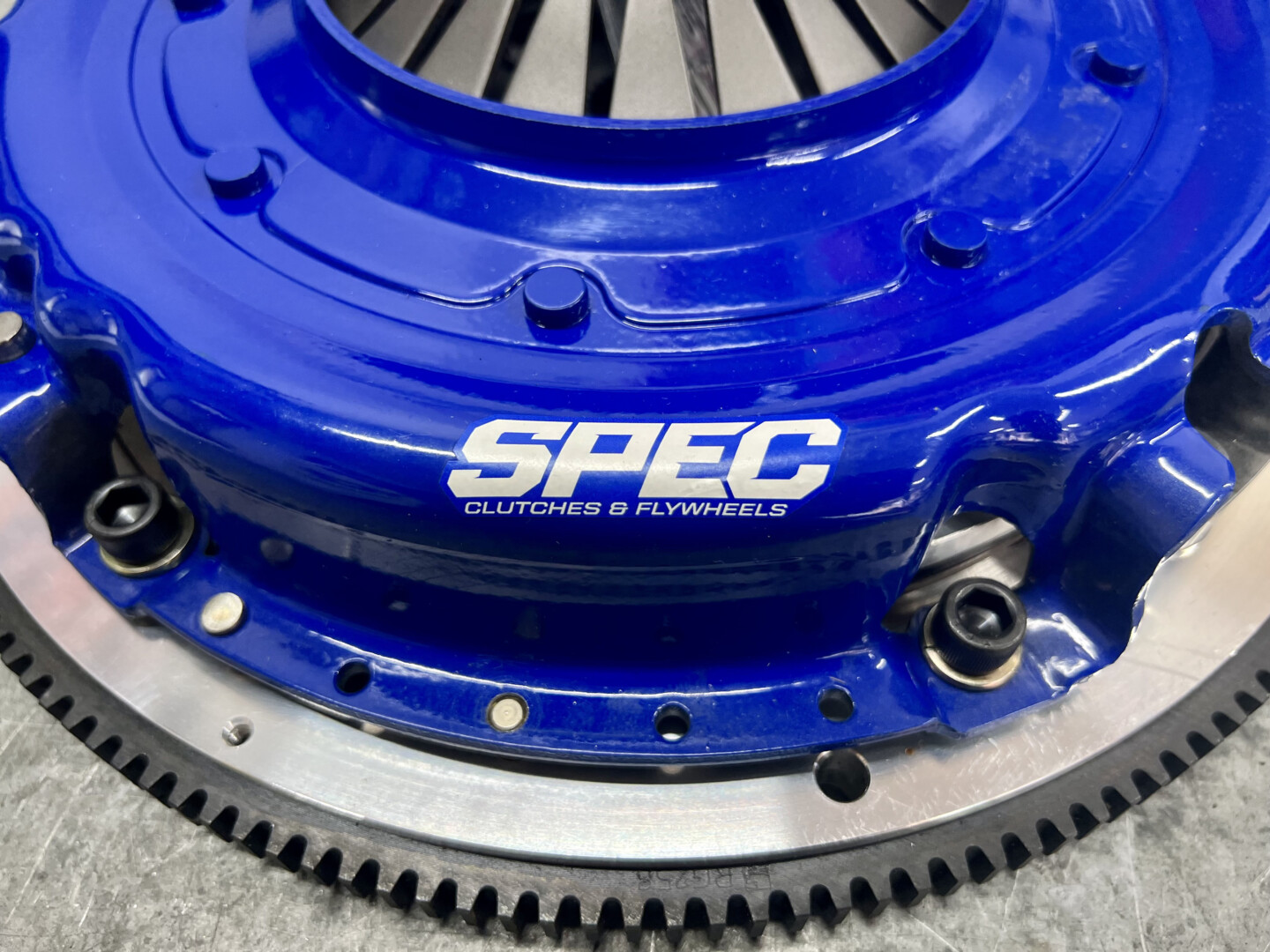
One advantage to buying all of the components from SPEC (flywheel, clutch, pressure plate, hardware) is that all the parts are designed to go together and will fit correctly. On the other hand, piecing together your own version of a Stage 2 clutch can be disastrous. Nobody wants to pull a transmission out more times than necessary.
We took Norton’s advice and ordered the SPEC Stage 2 Plus kit with the smaller 10.5-inch clutch and lightened flywheel. When the parts arrived in the mail, we were happy to see the outstanding fit and finish with the SPEC Clutch parts. So now it’s time to get greasy and climb under the car to get this project rolling.


















